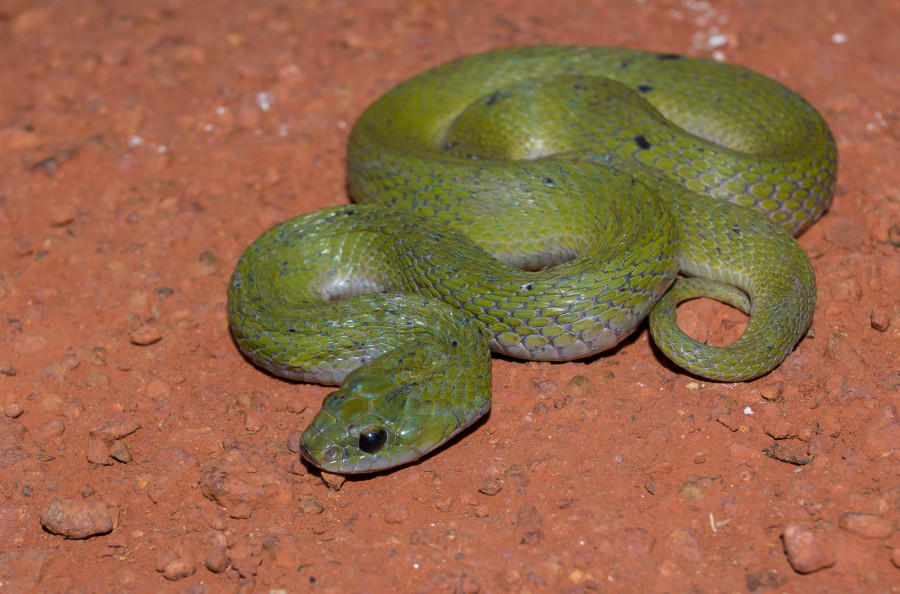Click on the pic to load it in higher resolution.
The first time I ever laid eyes on a Green keelback was was back in 1995. I was training to handle non-venomous snakes at the Pune snake park and the green keelback was one of the few species of snakes I was allowed to handle. I don’t have much of a memory of the snake but I do remember at least it being quite placid and inoffensive, unlike its cousin the Checkered keelback which rarely if ever missed a chance to sink its teeth into me!
About a year later I was back in Goa and rescuing all kinds of snakes from human habitations. On these snake rescue calls I encountered many of the different kinds of snakes I had handled while training including Checkered keelbacks, Common ratsnakes, Striped keelbacks, Common wolf snakes, Rock pythons, Spectacled cobras and Russell’s vipers. But I never once got called to rescue a Green keelback. I never realized how rare the snake might be until twelve years later when I still hadn’t found a single specimen of this species of snake. By then I was beginning to reduce the number of snake calls I was attending to. There were a lot more young men rescuing snakes now and I found it easier to simply pass on snake calls to them instead. This of course meant that my already slim chances of finding a Green keelback were going to get slimmer still! Then in May 2013 I got a call from my colleague Amrut Singh. He had just rescued his 15th King Cobra and he wanted to know if I would like to photograph it. Of course I did! I rushed off to his house in Bicholim the next morning.
While Amrut got his equipment ready for the King Cobra session I casually asked him if he had any other recently rescued snakes with him as well.
‘Well we do have a Common Krait and a Green Keelback as well. Do you want to see any of them?’
‘Both please!’ I answered hardly being able to contain my sheer joy and excitement at the prospect of finally seeing a Green keelback after nearly eighteen years of waiting to find one!
Amrut got out the Common Krait first which seemed to have recently shed its skin and was therefore excellent for photographing. After I was done photographing the Krait out came the Green Keelback. I almost held my breath as Amrut slid the snake out of the cloth bag he’d kept it in. When the snake got out I knew I’d finally made it! I had a healthy beautiful snake sitting calmly in front of me. I snapped away for several minutes. The foot long snake was an excellent model, hardly moving at all. I reviewed the pictures on my LCD screen and satisfied that I had several sharp shots of it I allowed Amrut to put the gentle snake back in the bag.
While the Green keelback is certainly a rare snake it apparently isn’t an impossible snake to find. It is possible that this snake is restricted to certain kinds of habitats or that it rarely enters human habitations: either one of these possibilities might make it out to be much rarer than it actually is. Rom Whitaker’s book Snakes of India mentions that this snake prefers toads to all other species of prey! This was interesting information for me since I’ve always believed that many snakes actually avoid eating toads for the distasteful secretions they produce from their parotid glands.

